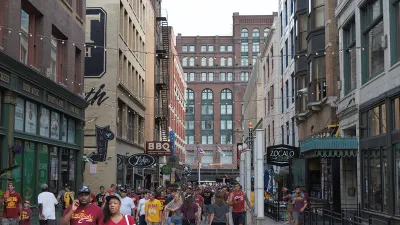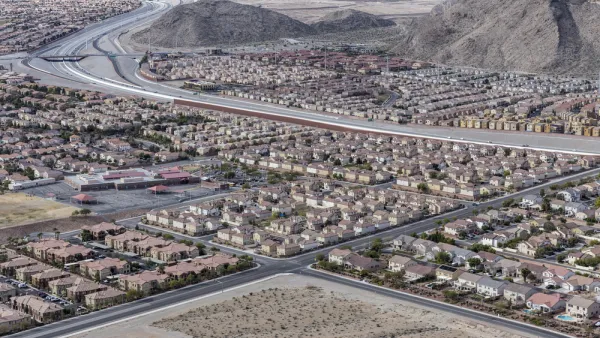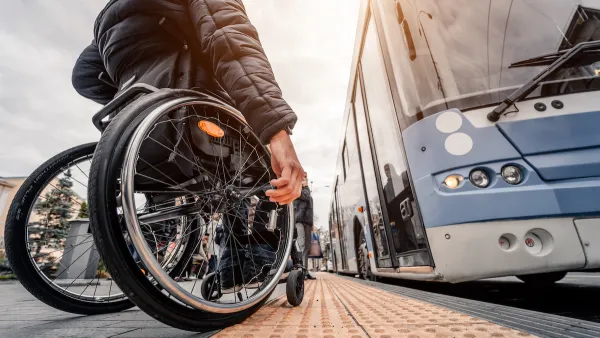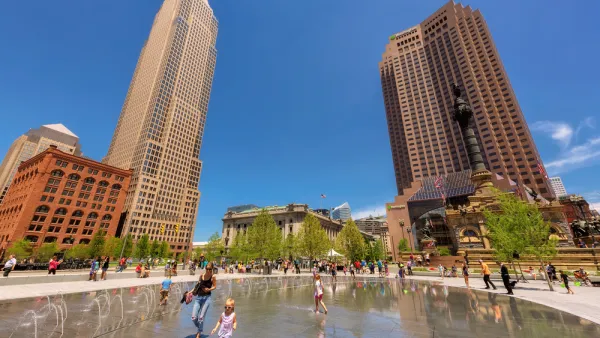A new study assesses which cities have the broadest access to walkable neighborhoods.

Urban planners frequently tout the benefits of walkability. But as Kea Wilson explains in Streetsblog USA, for many households, walkable neighborhoods just aren’t affordable. A new study sheds light on how walkability interacts with affordability. “Perhaps unsurprisingly, the researchers found that Americans on the whole will pay significantly more for the privilege of living in a place where they can get around on their own power: specifically, 35 percent more for home buyers, 41 percent more for apartment renters, and 44 percent more for office properties.”
According to an analysis from Smart Growth America, the city with the most equitable walkability in the United States is Cleveland, Ohio. According to Michael Rodriguez, visiting director of research at SGA, “Cleveland was at one point the fourth largest city in the U.S., and if you look at old images and videos of it, it was [as] vibrant as midtown Manhattan. These were proper cities, and we chose to enact policies that decimated that — but whatever we have left still provides a core of walkability today.”
“Perhaps shockingly, notoriously expensive New York City actually ranked second on the Social Equity Index, which he attributes to its proportionally high median incomes, astounding diversity, and the sheer preponderance of transit and people-oriented places that make car-free living possible for virtually everyone; residents of Manhattan, after all, spend an average of 37 percent of their income on housing and transportation combined, while residents of car-oriented Indianapolis spend 42, according to the Housing and Transportation Index.”
Wilson admits that New York City is an outlier, a megacity with many wealthy residents, but argues that equitable access to walkable communities shouldn’t be an anomaly. It could be part of every city if more effort was made to “implement zoning reforms, foster non-automotive travel, and invest in affordable housing for all.”
FULL STORY: America’s Most Equitably Walkable City is … Cleveland?

National Parks Layoffs Will Cause Communities to Lose Billions
Thousands of essential park workers were laid off this week, just before the busy spring break season.

Retro-silient?: America’s First “Eco-burb,” The Woodlands Turns 50
A master-planned community north of Houston offers lessons on green infrastructure and resilient design, but falls short of its founder’s lofty affordability and walkability goals.

Delivering for America Plan Will Downgrade Mail Service in at Least 49.5 Percent of Zip Codes
Republican and Democrat lawmakers criticize the plan for its disproportionate negative impact on rural communities.

Test News Post 1
This is a summary

Test News Headline 46
Test for the image on the front page.

Balancing Bombs and Butterflies: How the National Guard Protects a Rare Species
The National Guard at Fort Indiantown Gap uses GIS technology and land management strategies to balance military training with conservation efforts, ensuring the survival of the rare eastern regal fritillary butterfly.
Urban Design for Planners 1: Software Tools
This six-course series explores essential urban design concepts using open source software and equips planners with the tools they need to participate fully in the urban design process.
Planning for Universal Design
Learn the tools for implementing Universal Design in planning regulations.
EMC Planning Group, Inc.
Planetizen
Planetizen
Mpact (formerly Rail~Volution)
Great Falls Development Authority, Inc.
HUDs Office of Policy Development and Research
NYU Wagner Graduate School of Public Service





























